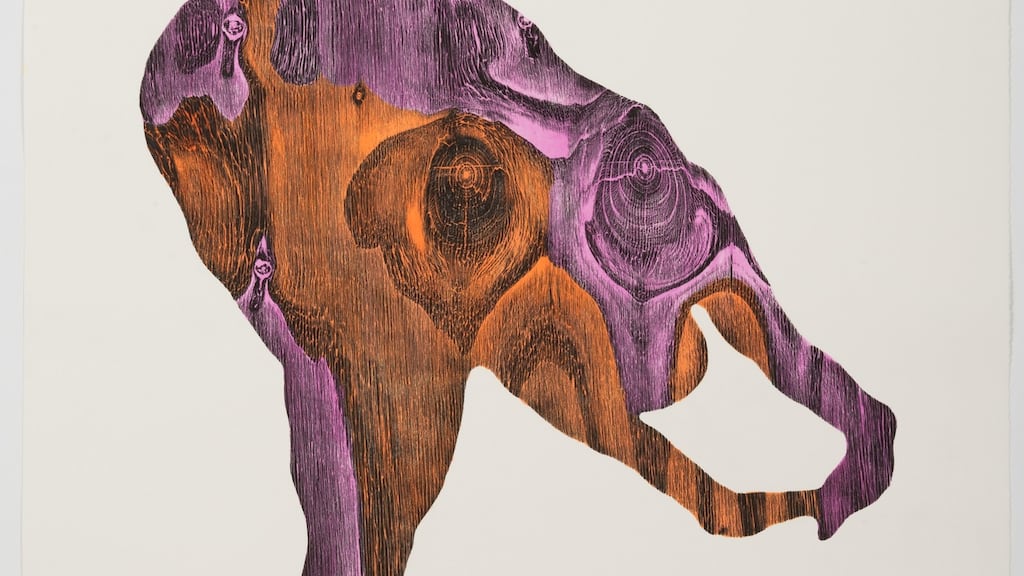What is it? Vox Hybrida I is a large-scale woodblock print by Alice Maher, one of a series made in 2018.
How was it done? The process began with photographs of the artist in movement, variously contorted and extended, taken by her partner, Dermot Seymour. She made drawings from selected images rendered in silhouette, so that the human form is abstracted into an ambiguous, flattened, dynamic outline shape. These shapes formed patterns cut out of sheets of rough, low-quality plywood and printed by Parallel Editions in Limerick. They were then hand-tinted with watercolour. The natural organic patterning of the plywood surfaces, with whorls, grain and knots, strongly evokes without actually depicting aspects of the human body.
Where can I see it? Vox Hybrida is part of Maher's exhibition, Vox Materia, at the Kevin Kavanagh Gallery, Chancery Lane Dublin (until December 22nd kevinkavanagh.ie). It was initiated by the curatorial partnership Pluck Projects and launched at the Source Arts Centre, Thurles, Co Tipperary earlier this year. More recently it was seen at the Crawford Art Gallery, Cork.
Is it a typical work by the artist? It is typical in the sense that Maher has consistently explored female experience and agency, often with reference to history, fairytales and myths. She has ranged freely across quite a span of media, from sculpture, using diverse materials, conventional and unorthodox, to animated film, photography and painting.
Drawing and graphics have been constants, as in a relatively early series of drawings featuring a capricious young heroine, perhaps an Alice in Wonderland alter ego, who gains a sense of her own power and potential even as the world conspires to deny her. Born in the townland of Kilmoyler, Co Tipperary, Maher attended school in Cahir, and though she went on to study in Limerick, Cork, Belfast and San Francisco (a Fulbright Scholarship), and lives now in Co Mayo.
The Tipperary environment however, steeped in history, especially Norman history, has remained important to her. Her starting point for Vox Materia was a remarkable medieval relief carving of a mermaid at the Cistercian Kilcooley Abbey near Gortnahoe in the county.
The mermaid holds a mirror and a comb, but her tail is manacled. Two fish, a salmon and a carp, swim nearby. Maher looked to Hans Christian Andersen's Little Mermaid who, to become human, was forced to sacrifice her voice – her tongue was cut out.
In the context of Maher’s oeuvre, it is easy to see the mermaid as representative of women who have been coerced and silenced by repressive, patriarchal social structures. As the show’s title suggests, she is giving substance to the mermaid’s lost voice.
The Vox Hybrida woodblock prints are one strand of the exhibition; the shape-shifting, hybrid creature we see resists the stereotypes of feminine visibility in Western art.
The other strand is sculptural, a series of small bronzes, cast from lumps of wax shaped by Maher’s clenched hands. There are not quite 26, but she thought of them as a kind of alphabet, or as symbolising an alphabet, another physical manifestation of the absent voice – and the body: they are reminiscent of coprolites, pieces of fossilized faeces, or perhaps fragments of organs.
Collectively, with the prints, they embody a presence that insists on agency and declines iconographic convention.











